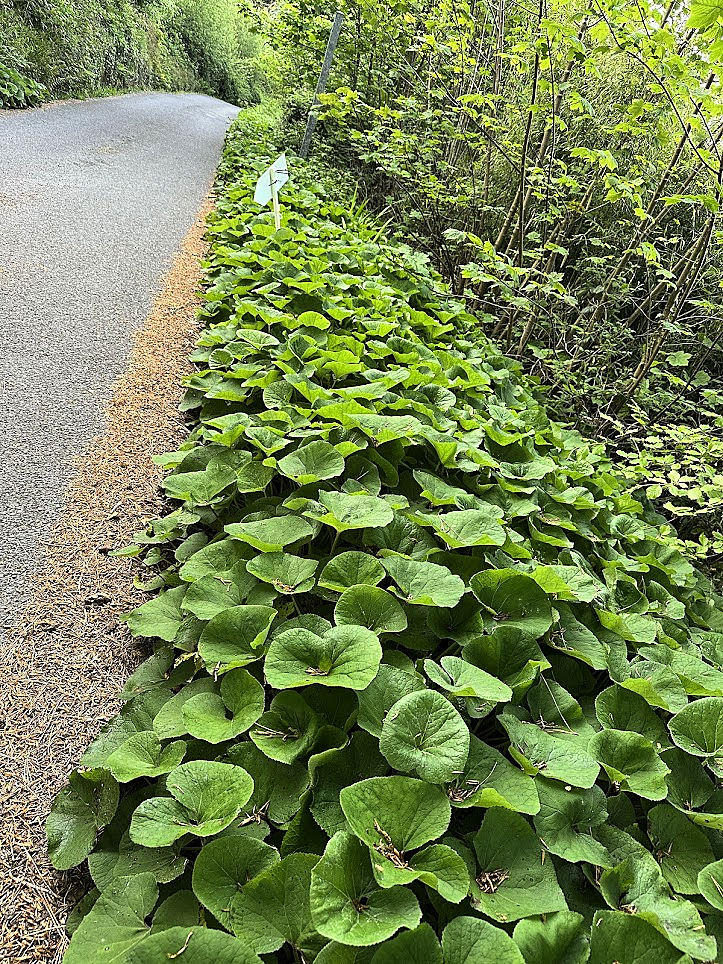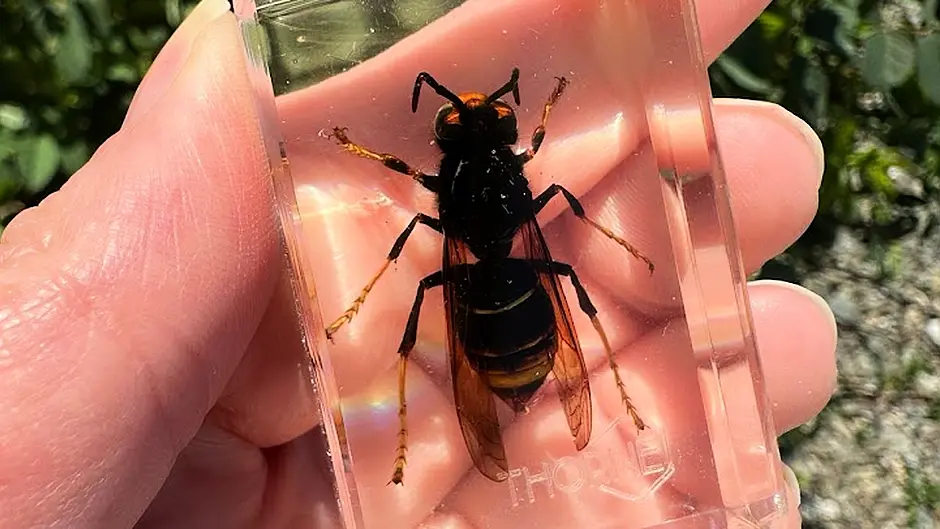
Invasive Species Week took place last week, from the 12th to 18th of May.
Each year, organisations, community groups, and individuals across Ireland come together to raise awareness about invasive species and how to prevent their spread.
For my part, I participated in an invasive species woodland walk in Myross Woods, gave a presentation at CECAS, Myross Wood House, and jointly led a second invasive species woodland walk with the National Parks and Wildlife Service in Glengarriff Woods Nature Reserve.
While this dedicated week and associated activities are valuable, it is becoming increasingly clear that invasive species demand attention throughout the year.
An ongoing issue
Non-native species are plants, animals, or other organisms introduced to new regions through human activity.
While not all non-native species become invasive, some, an estimated 10-15%, can establish and spread, causing negative impacts.
These impacts can include outcompeting native plants and animals, altering how ecosystems function, posing human health risks, and interfering with cultural, recreational, and economic activities.
According to the United Nations Intergovernmental Science-Policy Platform on Biodiversity and Ecosystem Services (IPBES), invasive species alone, or in combination with other pressures, have played a role in 60% of known species extinctions. IPBES also reports a sharp rise in invasive species globally, and without intervention, their number is expected to grow by another third by 2050.
Current and future threats
Ireland is already dealing with several well-known invasive species such as rhododendron and Japanese knotweed. However, other threats are emerging.
In Great Britain, scientists have recently highlighted that there are many new species that are likely to pose fresh risks in the coming decade.
These include pink salmon, purple Asian clams, marine invertebrates that form dense, spaghetti-like colonies, and a non-native worm linked to tree deaths.
In Ireland, future concerns also include species such as the American lobster, killer shrimp, and the Asian hornet.
Despite their often colourful or dramatic names, any of these species arriving and establishing in Ireland would be a dark prospect.
The Asian hornet
The Asian hornet (Vespa velutina), also called the yellow-legged hornet, is a significant concern for Ireland due to its potential arrival.
Native to Southeast Asia, this insect threatens biodiversity and the beekeeping industry by preying on honeybees and other pollinators.
While its sting is reported to be comparable to that of native bees or wasps, disturbed nests can lead to aggressive attacks.
The Asian hornet began its invasion in Europe in France in 2004 and has been spreading rapidly.
Great Britain has been tackling it since 2016, confirming sightings, and destroying nests.
In Ireland, only one single dying hornet has been found here in 2021.
However, given that our climate and habitats are considered suitable, it is thought that arrival may be imminent.
Accurate identification is crucial to avoid harming native species such as bees, wasps, and wood wasps.
Resources such as www.invasives.ie offer help with identification.
Anyone who thinks they have spotted an Asian hornet should report it immediately, ideally with a photograph, to the National Biodiversity Data Centre. Quick reporting supports a rapid response.
 Winter heliotrope is one of the non-native invasive plants being managed in Myross Wood, as shown here it can grow prolifically, crowding out native species.
Winter heliotrope is one of the non-native invasive plants being managed in Myross Wood, as shown here it can grow prolifically, crowding out native species.
Pacific pink salmon
Another major concern is the pink salmon (Oncorhynchus gorbuscha), also known as humpback salmon.
They are native to river systems flowing into the North Pacific Ocean and adjacent areas of the Arctic Ocean and the Bering Sea. However, pink salmon were introduced to northwest Russia in the 1950s for commercial fishing and since then, they have spread to Europe. Due to invasion concerns here, Inland Fisheries Ireland (IFI) regularly issue updates on this species.
In 2017, 36 pink salmon were caught in 11 Irish rivers, and it is thought that their spread has been assisted by rising water temperatures.
These fish pose a grave threat to our native Atlantic salmon, not only by competing with them, but also by potentially infecting them with parasites and diseases. Pink salmon spawn in freshwater rivers from late summer to mid-autumn and die afterwards. Their offspring migrate to the sea and return to spawn after one winter, creating a two-year life cycle. A small number of pink salmon have returned to Irish rivers every odd-numbered year since 2017.
Anglers are advised to keep and freeze any pink salmon they catch and report it to Inland Fisheries Ireland at 0818 347424. Dead fish found downstream of spawning areas should also be reported. The IFI are now using environmental DNA sampling to monitor Irish rivers for invasion by pink salmon via a project called PINKTrack.
What else can we do?
As mentioned, early detection and swift reporting are essential in stopping species like the Asian hornet and pink salmon before they establish permanent populations.
While policy makers, government agencies, and border authorities play a key role in controlling imports and trade, individuals can also make a difference. Strong biosecurity measures are essential to prevent the introduction and spread of invasive species.
Ireland currently has three core public biosecurity campaigns:
Check Clean Dry encourages anyone using rivers, lakes, or the sea to inspect and clean boats, equipment, and clothing to avoid spreading aquatic invasive species.
Be Plant Wise urges gardeners and pond owners to dispose of plants responsibly and avoid planting invasives.
Be Pet Wise promotes responsible pet ownership to prevent exotic pets from escaping or being released into the wild.
In West Cork, while we are currently free of some of these high-profile invaders, like the Asian hornet, this may not always be the case. Staying vigilant, reporting sightings, and participating in biosecurity campaigns can help protect our local biodiversity, not just during Invasive Species Week, but throughout the year.







